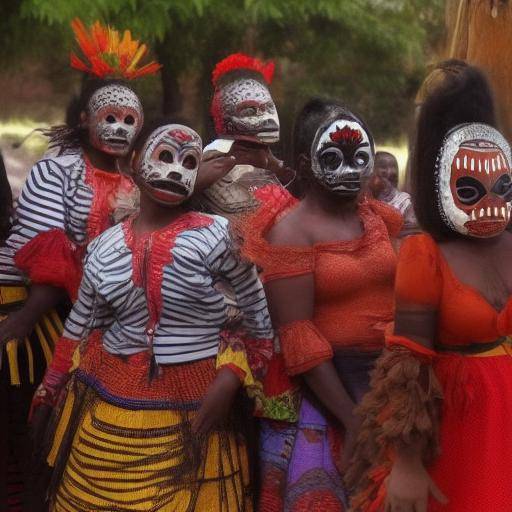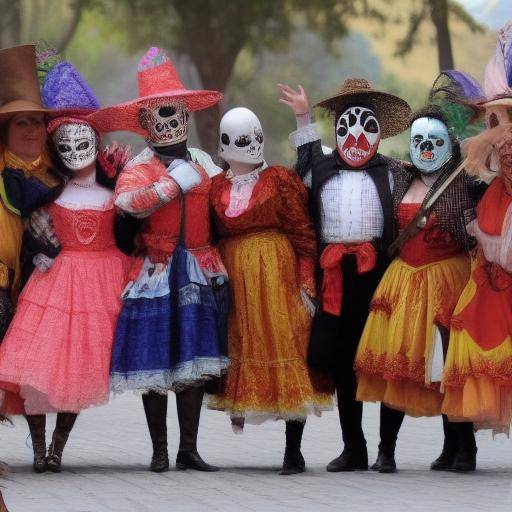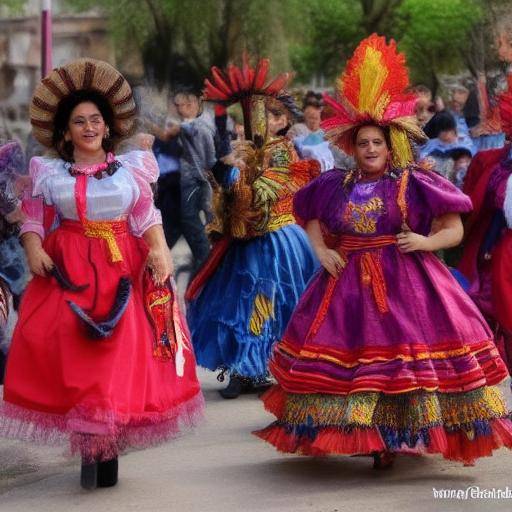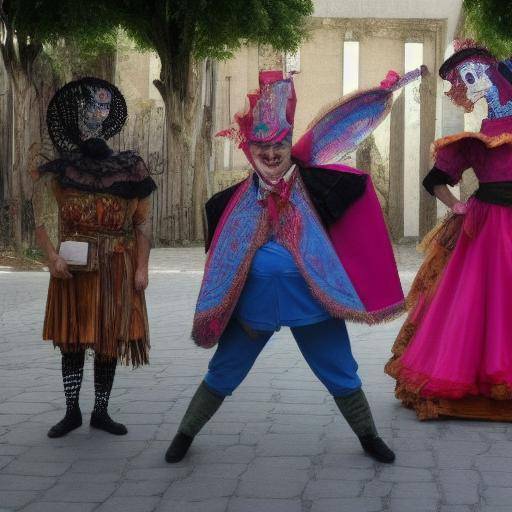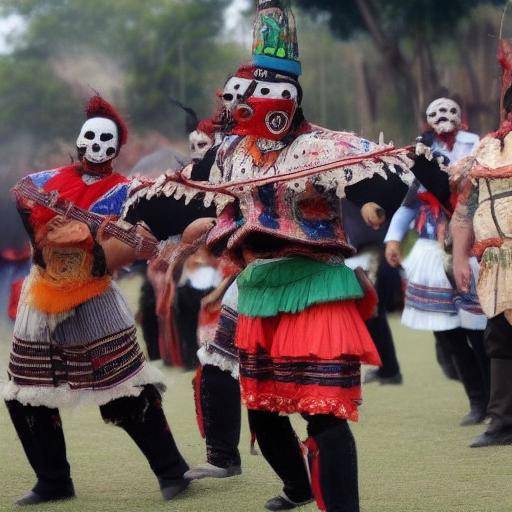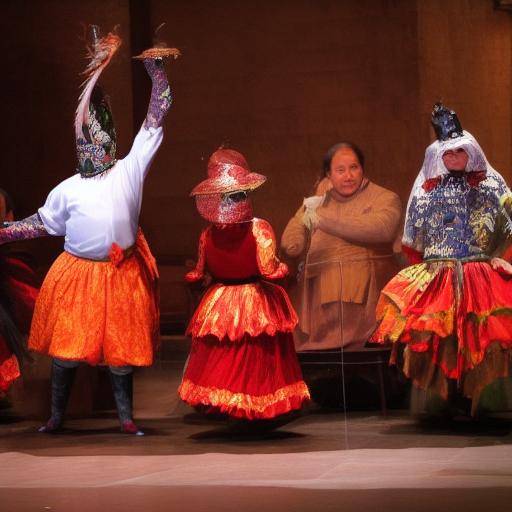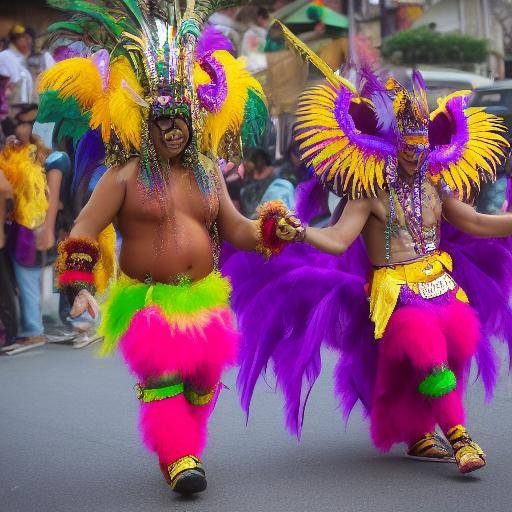
Introduction
Have you heard of the Ati-Atihan, the vibrant Filipino festival that combines the tradition of Christianity, the ancient tribal customs and the enigmatic art of masks? In this article, we will thoroughly explore the rich history, rooted traditions and contemporary evolution of this unique celebration. From its cultural relevance to its impact on society, immerse yourself in the fascinating world of Ati-Atihan and discover how to merge Christian heritage, tribal heritage and mask mysticism to create an unforgettable experience. Get ready to marvel at the colorful and passion of Ati-Atihan!
History and Background
The Ati-Atihan, known as "The Mardi Gras Filipino", has its roots on the island of Panay in the Philippines. Although its precise history is lost in the mists of time, it is believed that it dates back to the thirteenth century, when a group of Borneo residents and the Ati blackites, the original inhabitants of the island, celebrated a feast in honor of the image of the Holy Child. The Christian holiday of baptism and the assimilation of tribal beliefs Ati laid the foundations of cultural syncretism present in the Ati-Atihan.
The festival evolved through the centuries, becoming a unique expression of Christian faith mixed with the tribal traditions of the Atis. During the Spanish colonization, the celebration gained greater importance by integrating elements of the carnival, becoming an event in which popular participation and religious syncretism unite in a celebration without equal. This spirit of unity and diversity has made the Ati-Atihan a cultural heritage recognized not only in the Philippines but throughout the world.
Deep analysis
The Ati-Atihan has been a powerful link between Christian faith and tribal traditions, representing the peaceful and harmonious coexistence of both influences. The festival has played a crucial role in strengthening the cultural identity of the local tribes, promoting deep-rooted pride in their ancestral heritage, while providing a platform for cultural tourism and the global exchange of traditions.
The vibrant masks that characterize the Ati-Atihan are a manifestation of the creativity and devotion of the participants, turning the festival into an unparalleled visual spectacle. These masks, which represent a variety of religious images, tribal figures and elements of nature, add a dimension of mysticism and riddle to the celebration, capturing the imagination of spectators and participants alike.
Comprehensive review
In the international context, Ati-Atihan is not only venerated as a religious festival, but also as a cultural phenomenon that reflects the diversity and syncretism of Filipino society. The festival has become a world-renowned tourist attraction, attracting visitors from everywhere to witness their impressive display of color, music and dance. In addition, the economic impact generated by tourism related to Ati-Atihan has driven local development and contributed to the preservation of cultural traditions.
The rich amalgam of religious and tribal traditions in Ati-Atihan has also served as a source of inspiration for artists, academics and anthropologists, who analyze it as a living testimony of cultural interaction and adaptation throughout history. This intersection of faith, folklore and artistic expression has stimulated a global dialogue on the preservation of indigenous cultures and the promotion of cultural diversity in an increasingly interconnected world.
Comparative analysis
In the crucible of cultural celebrations, the Ati-Atihan stands out as an outstanding example of how Christianity, tribal traditions and the art of masks can coexist harmoniously, showing similarities and differences that reflect the complexity of cultural identity. While Christianity provides a spiritual and devotional dimension, tribal traditions infuse a sense of entrenchment to the earth and a connection to nature. On the other hand, the masks, elements of both Christian tradition and tribal culture, add an element of mysticism and enigma that enriches the experience of the festival.
Tips and Suggested Actions
If you are curious to experience the fascinating world of Ati-Atihan, here are some practical tips for living this experience in full:
- Plan your visit in advance to make sure you match the dates of the festival.
- Dive into the rich local culture by participating in traditional activities, such as parade and folk dances.
- Connect with the local inhabitants to gain a deeper understanding of the traditions and beliefs that support the festival.
- Take part in workshops to produce masks to learn about the art and symbolism of these unique pieces.
Industrial Perspectives and Expert Reviews
The Ati-Atihan, in addition to being a cultural event of great relevance, has also awakened the interest of experts in cultural tourism, anthropologists and promoters of cultural diversity. Its impact on tourism and local development, as well as its ability to foster intercultural dialogue, make it a case of study worthy of analysis and reflection. The way the festival has been able to preserve ancestral traditions while promoting mutual understanding, offers valuable lessons for the development of cultural conservation strategies and sustainable tourism in other regions of the world.
Case Studies and Practical Applications
Over the centuries, the Ati-Atihan has transcended its role as a local holiday to become an inspiring example of cultural coexistence. Its ability to integrate elements of Christianity and tribal traditions, together with the symbolism of masks, offers a wealth of lessons for the promotion of cultural diversity and the preservation of ancestral heritage in different contexts.
Future Trends and Predictions
As the world becomes more interconnected, the role of the Ati-Atihan as ambassador of cultural diversity and religious syncretism becomes even more relevant. The unique experience offered by the festival, combining elements of deep devotion, rooted tribal traditions and artistic expression, is a living testimony of the ability of mankind to embrace diversity and find unity in difference. It is hoped that Ati-Atihan, continuing its legacy of cultural cohesion, will remain a source of inspiration and an important contribution to the global dialogue on cultural diversity and intercultural interaction.
Conclusion
At the end of this journey through the rich history, the entrenched traditions and the contemporary evolution of Ati-Atihan, it is clear that this festival represents much more than an annual celebration: it is a symbol of the ability of human beings to merge their cultural identities in a spirit of harmony and mutual respect. This vibrant encounter between Christianity, tribal traditions and mask mysticism is a testimony to the cultural diversity that enriches our world.
FAQs
What is the meaning at the Ati-Atihan festival?
The Ati-Atihan is a celebration that combines Christian devotion with the ancient tribal traditions of Panay Island in the Philippines. Its meaning transcends the purely religious and becomes a symbol of cultural harmony and diversity.
Why are the masks so important at the festival?
The masks are an artistic expression that combines religious and tribal elements, and play a crucial role in the representation of cultural identity and spirituality during the festival.
How does Ati-Atihan relate to the history of Christianity in the Philippines?
The Ati-Atihan dates back to the 13th century, when settlers from Borneo and the black Ati celebrated a feast in honor of the image of the Holy Child. Over time, the festival was influenced by the arrival of Christianity in the Philippines, becoming a unique expression of cultural syncretism.
What is the economic impact of the festival in the region?
The Ati-Atihan has been an important driver of cultural tourism in the Panay region, attracting national and international visitors. This has generated a significant economic impact through job creation and the development of tourist infrastructures.
How has Ati-Atihan evolved over the centuries?
The festival has evolved from its tribal roots to becoming a celebration that merges religious, traditional and festive elements. Over the centuries, it has maintained its cultural relevance and is now a unique expression of Filipino diversity.
What is the role of cultural syncretism in Ati-Atihan?
The Ati-Atihan reflects cultural syncretism by integrating Christian faith with tribal traditions, thus creating a space where diversity is celebrated and united through religious devotion and traditional artistic expressions.
How has Ati-Atihan impacted on the preservation of tribal traditions in the Philippines?
The festival has played a crucial role in preserving tribal traditions by integrating them into a contemporary context. This has contributed to the promotion of cultural diversity and the strengthening of pride for the ancestral roots of local communities.
With these questions and answers, we have managed to address key aspects of the Ati-Atihan, providing a profound and enlightening view of this fascinating celebration.
In short, Ati-Atihan is not only a religious festival, but also a symbol of cultural diversity and syncretism, which embraces the rich heritage of Christianity, ancient tribal traditions and enigmatic art of masks. This celebration remains a lighthouse that illuminates the path to the appreciation of cultural diversity and unity in difference.
Remember, the wealth of history and culture is within reach of those who wish to immerse themselves in it. Discover the fascinating world of Ati-Atihan and let your vibrant spirit wrap you in an unforgettable experience!

